STRouX Berlin
July 15 – August 15, 2021
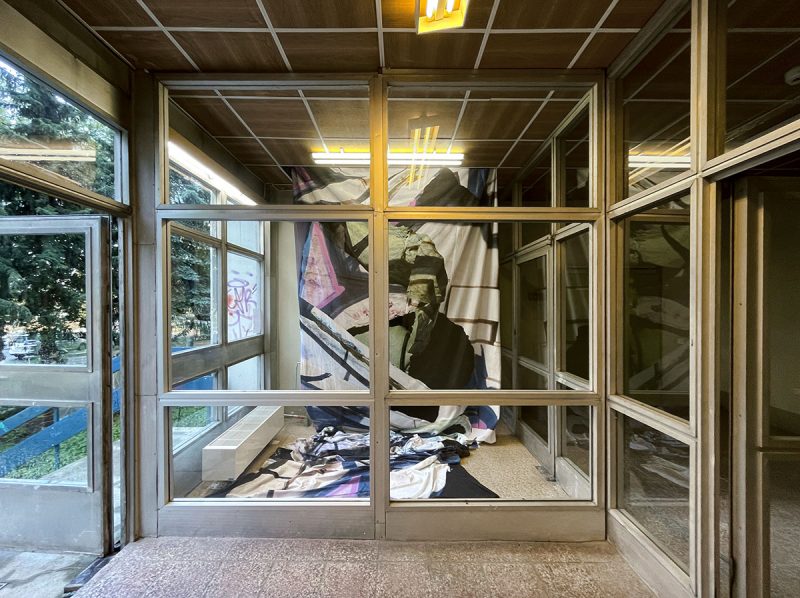
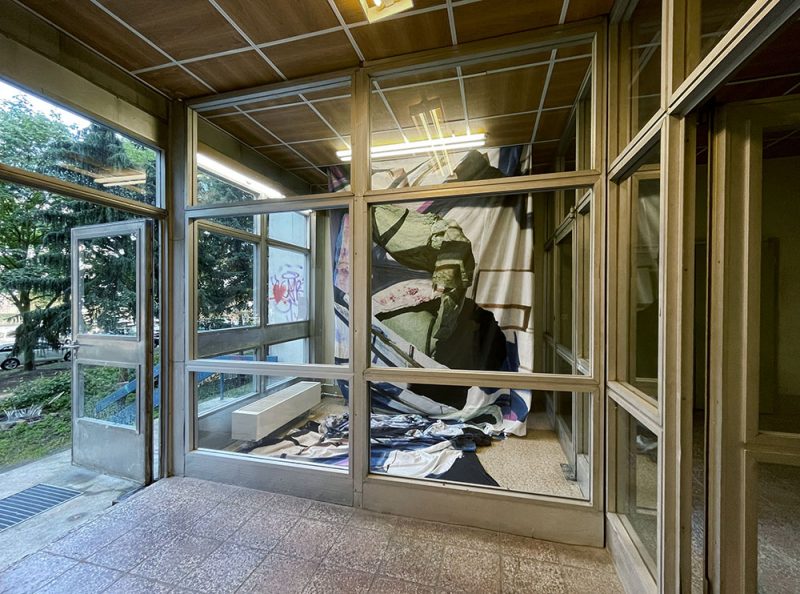
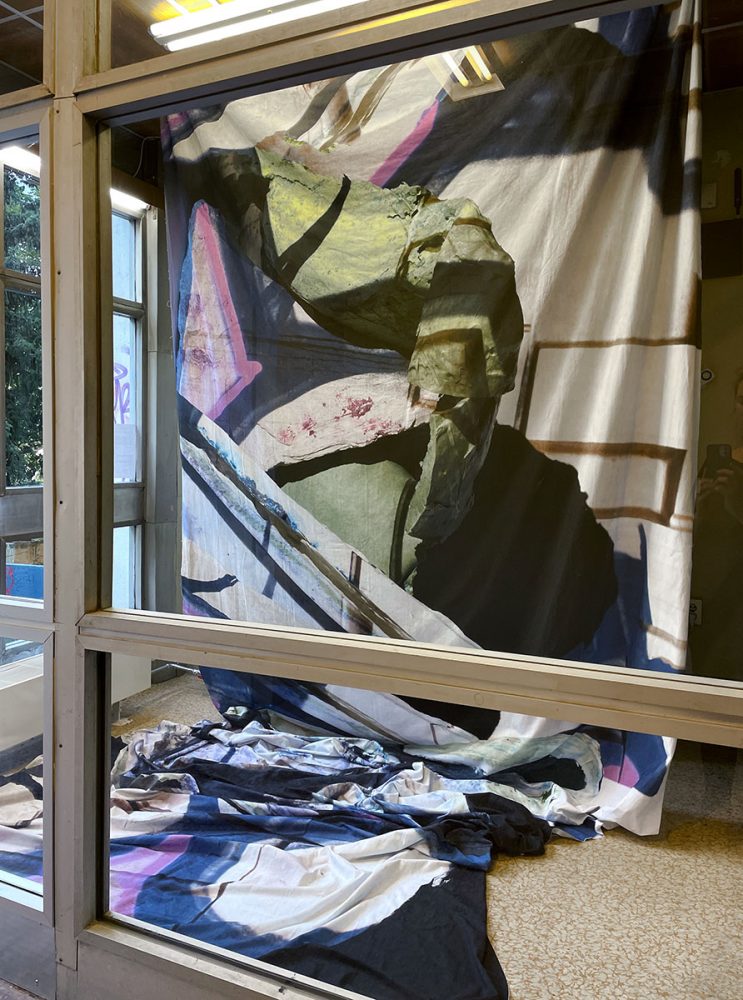
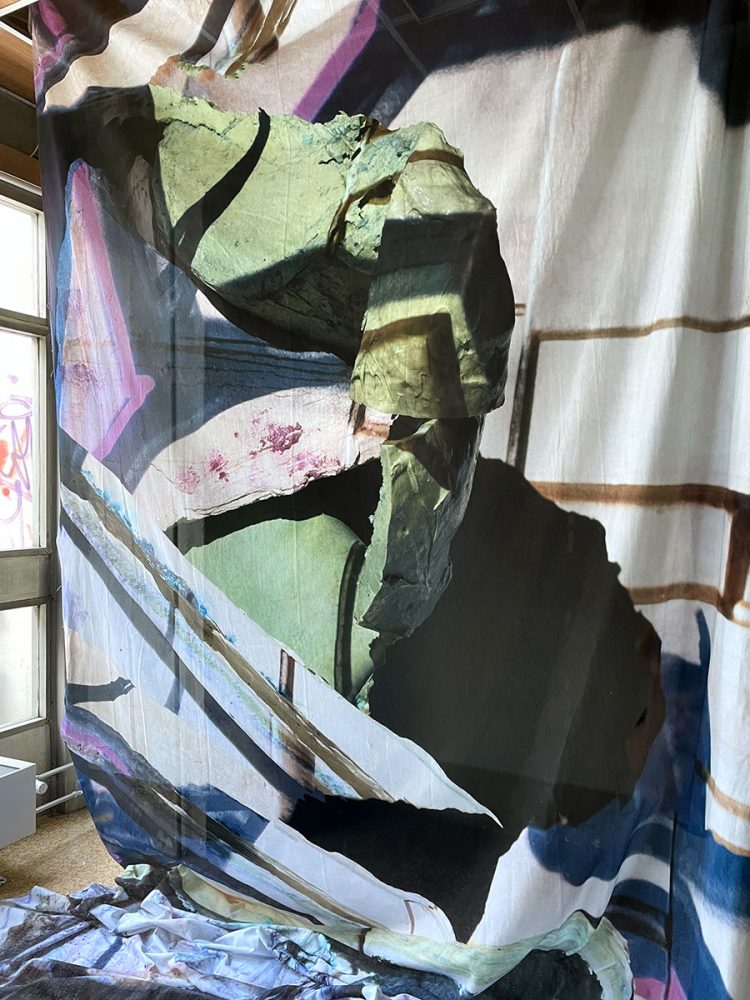
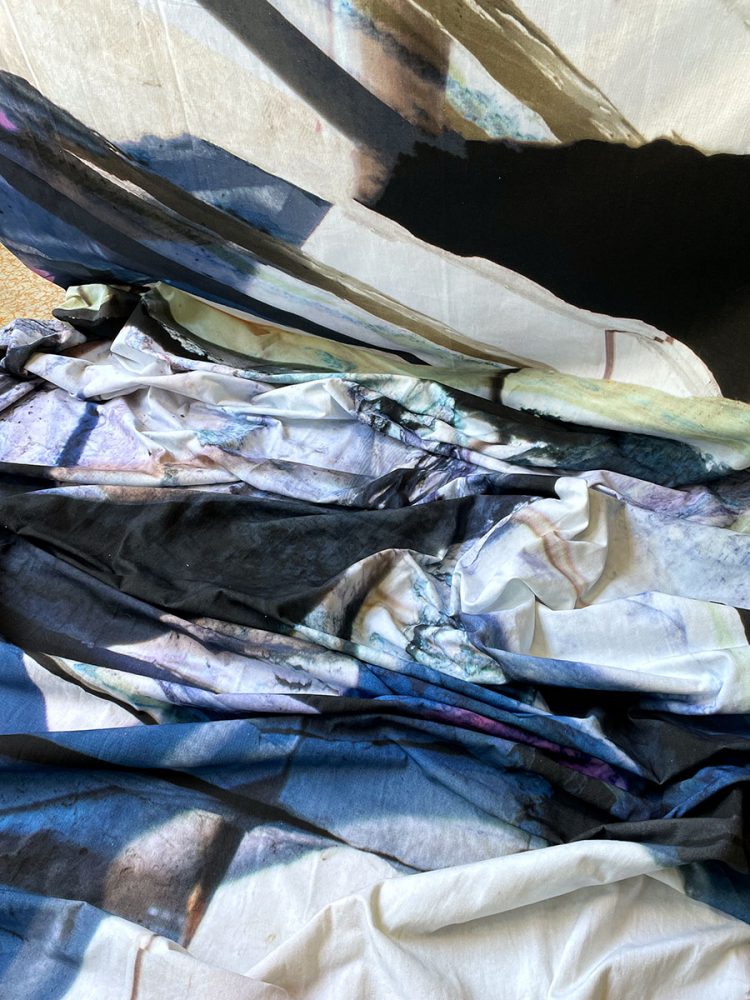
Fadenbildung und Faserstrukturen, 2021
Photography on fabric, 250 x 620 cm
Astrid Busch’s installation was inspired by the past and current interim state of the six-storey prefab building from the 1970s. To this end, she combined different levels of time and condition in a collage printed on fabric: parts of graffiti on the Ernst Thälmann monument, architectural fragments of the “House of Travel” on Alexanderplatz, concrete formwork, and various lighting conditions.
The length of fabric installed by the artist seems to come out of the building itself and to want to spread downwards. The pink in her motif combines with traces of existing graffiti on the door and window frames, as well as on the outside wall of the loge, and embodies the momentary sense of homelessness of the site.
The title Fadenbildung und Faserstrukturen (Thread Formation and Fibre Structures) is taken from the minutes of a meeting of the Academy of Science, which was dedicated to the work of the textile technician Wolfgang Bobeth. Architecture as a canvas and design element, the aesthetics of the mosaic murals created between 1950 and 1989 and the construction-related art on buildings in the former GDR, and an ideological mediation by the socialist state that was thus desired, also served Astrid Busch as a source for associations.
Various personalities of the GDR’s past and typical building elements and materialities of the 1970s thus combine to form a picture that fills the space. Fabric as the material basis enables the design of the motif as a sculpture in space and breaks through the geometric forms of the room and the glass surfaces. The result is an interplay of vision, abstraction, and reality, of achievement and failure, and the tension between the atmospheric and the architectural.
Astrid Buschs Installation ist inspiriert von der Vergangenheit und dem momentanen Zwischenzustand des sechsgeschossigen Plattenbaus aus den 1970er Jahren. Dafür vereint sie verschiedene Zeit- und Zustandsebenen in einer auf Stoff gedruckten Collage miteinander: Teile eines Graffitis am Ernst Thälmann Denkmal, Architekturfragmente des “Haus des Reisens” am Alexanderplatz, Betonschalungen und unterschiedliche Lichtverhältnisse.
Die von der Künstlerin installierte Stoffbahn scheint aus dem Gebäude selbst herauszukommen und möchte sich nach unten hin ausbreiten. Das Pink in ihren Motiv verbindet sich mit vorhandenen Graffiti-Spuren an der Tür und Fensterrahmen sowie der Außenwand der Loge und verkörpert eine momentane Heimatlosigkeit des Ortes.
Der Titel “Fadenbildung und Faserstrukturen” ist einem “Sitzungsbericht” der Akademie der Wissenschaft entnommen, der dem Wirken des Textiltechnikers Wolfgang Bobeths gewidmet war. Architektur als Leinwand und Gestaltungselement, die Ästhetik der zwischen 1950 und 1989 geschaffen Mosaik-Wandbilder und der baubezogenen Kunst an Gebäuden der ehemaligen DDR, und eine damit gewünschte ideologische Vermittlung durch den sozialistischen Staat, diente Astrid Busch ebenfalls als Assoziationsquelle.
Somit verbinden sich verschiedene Persönlichkeiten der DDR Vergangenheit, typische Bauelemente und Materialitäten der 70er Jahre zu einem raumfüllenden Bild. Stoff als Materialgrundlage ermöglicht die Gestaltung des Motivs als Skulptur im Raum und durchbricht die geometrischen Formen des Raums und der Glasflächen. Es entsteht ein Wechselspiel von Vision, Abstraktion und Wirklichkeit, von Errungenschaft und Scheitern und dem Spannungsfeld zwischen Atmosphärischem und Architektonischem